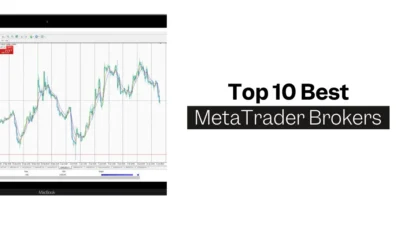Disclosure: Privacy Australia is community-supported. We may earn a commission when you buy a VPN through one of our links. Learn more.
What Caused OPEC to Cut Oil, and How Will It Affect Energy Shares?
Oil output was reduced by OPEC and allies in advance of a predicted economic downturn.
The Organization of the Petroleum Exporting Countries and its allies (OPEC+) are worried about the Federal Reserve and the strong US dollar. The energy market is very cyclical, and since the cycle has reached its conclusion, investors should go elsewhere.
Unexpected Supply Cut by OPEC & Allies
Oil production cuts of around 1.16 million barrels per day were unexpectedly announced by OPEC+ on April 2nd. This follows the unexpected reduction of over 2 million barrels per day in October 2022. So, why have OPEC and allies been reducing oil output?
OPEC+ oil output reduction may be explained by the following factors, as outlined by Reuters: Higher oil prices are needed for local economic purposes, speculators who trade short crude oil futures must be punished, there is worry about global demand in the midst of the “Western banking crisis,” and the Biden administration has refused to replenish strategic stocks.
All of these topics are addressed in OPEC’s most recent Monthly Oil Market Report for April 2023. The study discusses the deteriorating forecast for global economic growth, the decline in hedge funds’ net long holdings in crude oil futures, and the decision by the Biden administration not to replenish the SPR. A single passage, though, sticks out:
After the turmoil in the US banking sector in March, the aftereffects of monetary tightening are likely to persist. This estimate relies heavily on the Federal Reserve’s ability to create a gentle landing, since the Fed is essentially targeting weaker economic growth in order to reign in inflation.
It is a Classic Example of a Macro Story
So, the aforementioned paragraph sums up the whole story, and this is a common theme discussed in global macro circles.
Although many are hoping for a soft landing, the recession is likely due to the Federal Reserve raising interest rates to stem the inflationary spike.
However, the recession was foreshadowed by the banking crisis in March; this event was the catalyst for reduced consumer spending as a result of more stringent lending requirements, which in turn increased the likelihood of joblessness. In reality, the Fed aims for an unemployment rate of 4.5%.
Oil prices will fall as a result of the recession in the United States, which is responsible for twenty percent of world demand.
The Biden administration’s economists are aware of this issue; hence, waiting to replenish SPR might result in savings.
The theme is not lost on hedge funds, which is why they have begun shorting crude oil futures.
Still, There is More to the Story
But here’s something that few are actively discussing: the prospect of the continued strength of the US Dollar (UUP) or, more precisely, the weakness of the Euro (FXE).
According to one study on crude oil speculation, the price of crude oil has a strong positive correlation with the Euro.
Crude oil prices drop dramatically when the Euro does, and increase when it does not. In 2014, the collapse of oil prices coincided with the collapse of the Euro.
Russia took Crimea immediately before the oil price fall in 2014, so keep that in mind. It is important to remember that the drop in oil prices in 2008 coincided with the Euro’s devaluation, and that a few years later, the Arab Spring occurred. Because of this, the recent drop in oil prices has significant international ramifications.
In light of this, OPEC+ is understandably concerned about a strong USD leading to lower oil prices for reasons other than supply and demand. Liquidity shock is reflected in a worldwide scarcity of the US dollar, the world’s reserve currency. As a result of the global liquidity shock, investors are fleeing developing markets, commodities, and any other risky assets in favor of the United States dollar and U.S. Treasury bonds.
The economic collapse of commodity-producing nations caused by a worldwide flight to safety directly contributed to the political instability and anarchy that culminated in the Arab Spring.
The Supreme Fed
By cutting off the flow of money, the Federal Reserve may cause the US dollar to rise in value and cause a worldwide rush to safety. How? By lowering the size of the central bank’s balance sheet (known as QT) and by raising interest rates considerably above the pace of inflation.
As a result, the Fed may indirectly affect the politics of the OPEC+ nations and the results of world conflicts.
The current oil production reduction is merely a short-term solution, with OPEC+ cognizant of this fact and aiming to maintain oil prices high for as long as possible in the hopes of a gentle landing. However, the Fed is cognizant of the fact that a stronger USD is currently required to bring inflation to 2%. Therefore, do not count on the Fed’s cooperation.
Long-term, Saudi Arabia, the European Union, and Brazil have begun withdrawing from the USD-dominated system, putting themselves outside the control of the Federal Reserve and creating a whole new source of global strife.
Consequences for the Energy Industry
Since the crash of 2020, oil prices have followed the ETF that tracks the energy sector (NYSEARCA:XLE) higher. The energy sector outperformed the S&P 500 (SPY) by 42% in 2022, whereas the S&P 500 (SPY) fell by 26% from January to October 2022 due to the liquidity selloff. Year-to-date (YTD), XLE is up 4% even in 2023.
Long-term charts, however, show that the energy industry is extremely cyclical and prone to boom-and-bust cycles. In addition, the energy market tends to outperform the rest of the market late in the economic cycle. It peaks in the late cycle with oil and a general inflation, and then it plummets when the recession sets in.
The energy sector is likely a SELL now since we are at the conclusion of the late cycle and near the top of the range.
If you are an investor drawn to the 3.83% dividend yield of XLE, you may want to consider the greater return available in 2Y Treasury Notes.
Stocks in the energy sector are trading at low prices because investors do not anticipate them to expand in the future. Exxon Mobil Corporation (XOM) makes up 23% of XLE and is trading at a PE ratio of 9. Value investors, beware!
OPEC and allies’ sudden decision to reduce oil supply presents a buying opportunity.
Conclusion
Major repercussions: With the core CPI remaining at 5.6% and the jobless rate at 3.5%, investors anticipate a pause in March and a reduction in 2023 from the Fed.
On the other hand, I believe the Fed will continue increasing beyond market forecasts, which will strengthen the dollar as the market readjusts for a more hawkish central bank. As a result, the energy sector (XLE) is anticipated to continue its downward trajectory alongside oil.
The Fed must raise the unemployment rate; a rate of less than 4% precludes the beginning of a new business cycle. That is why we have to expect a recession soon. In the short run, the United States benefits geopolitically from the global recession. It may hurt now, but in the long run it will be beneficial.





